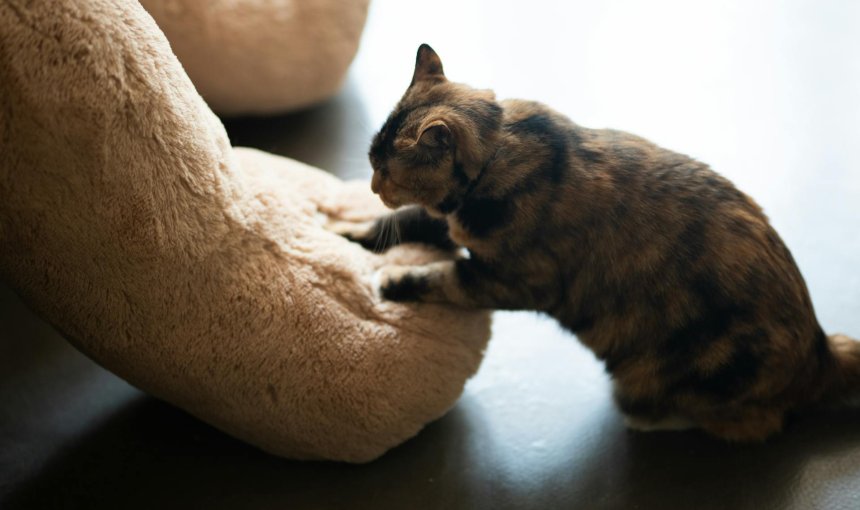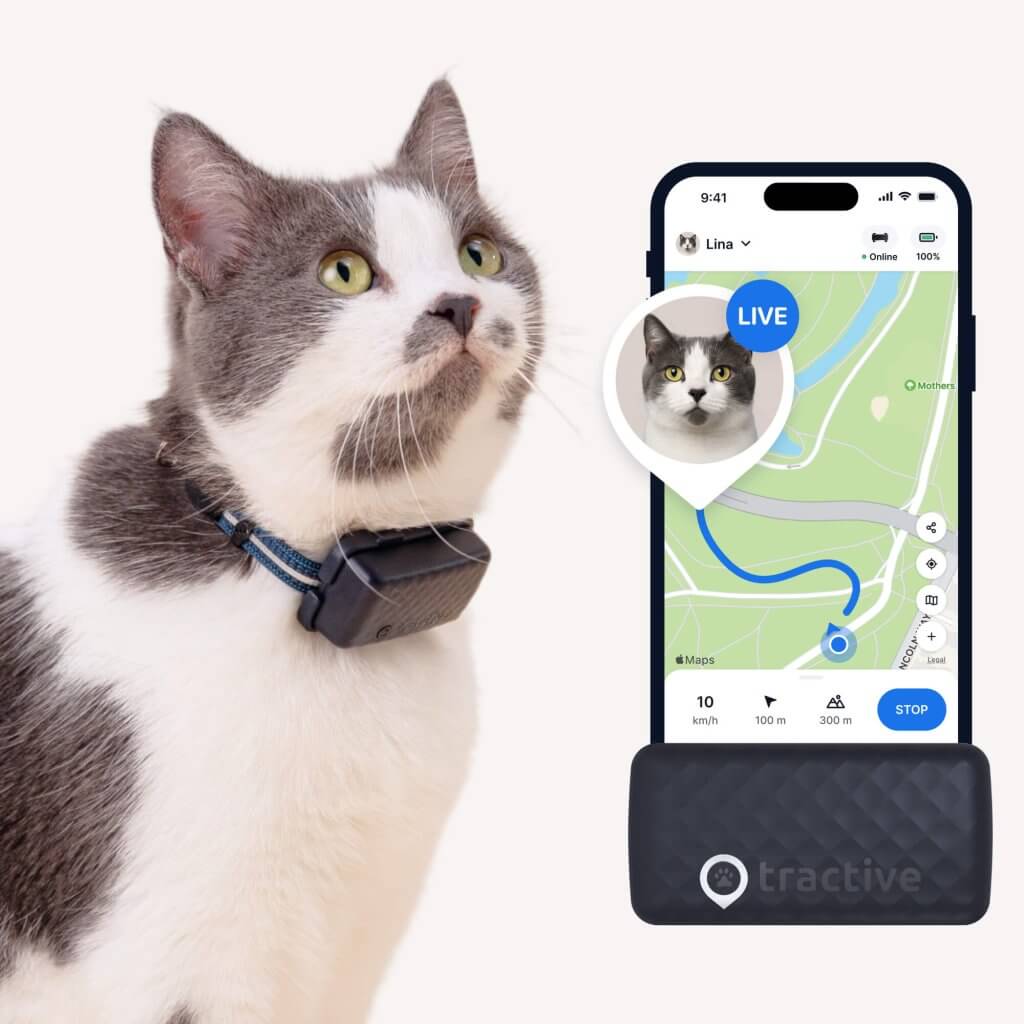Why Do Cats Make Biscuits? (Aka, The Feline Need To Knead)
You might notice your cat making "biscuits" or kneading against you or the surface beneath their paws. But have you ever wondered why they do it? Turns out, it's a sign of affection - but also much more.

You might think your cat’s a prince or princess reincarnated – but their natural instincts might make them better suited for your local bakery instead. It’s why you’ll often see a cat making “biscuits”. Aka, rhythmically pawing or “kneading” the surface or objects beneath their paws – as if giving them a massage. But what does it mean when a cat makes biscuits? Is it just one of your cat’s quirks? Or does it signal something more?
Your cat’s kneading behavior indicates a bunch of things – and yes, one of them being that they love you and trust you. (It’s also one of the ways to indicate your cat is in heat.) Let’s dive right in and uncover what underlies the feline need to knead.
What does a cat making biscuits look like?
You might’ve experienced a cat making biscuits if yours is sitting on your lap – and suddenly begins to knead your stomach. Rhythmically pushing their paws in and out, kind of like a baker kneading dough. Or you might’ve noticed how your cat gives their sleeping basket or blanket a good massage before they lie down for a nap.
A cat making biscuits is usually a gentle, unhurried motion. Your cat might even purr contentedly while at it – or slow blink at you. So if you’ve ever wondered what this rather endearing behavior means, here are a couple of reasons your cat might be doing it.
What does it mean when a cat makes biscuits?
Your cat is reminiscing their kitten days
A cat making biscuits is usually on a bit of a nostalgia trip. It’s how kittens knead against Mama Cat’s belly to get her to nurse them. (The motion stimulates milk flow and helps them feed better.) At this young age, kittens are really quite helpless – so Mama Cat is responsible for helping them bond, learn to trust, and grow. So besides simply getting fed, this is a safe, happy time when your cat felt loved, protected, and cared for. Which makes making biscuits a sort of throwback to this soothing, comforting time.
Your cat is marking their territory
Cats’ paws have scent glands located in them. So a cat making biscuits is actually them marking their territory with their scent markings. When they knead a surface or an object, they leave this scent behind – staking a claim on the object or place (or person) as their own. It’s how they indicate, “This is MY spot.”
Your cat is getting a bit of exercise in
A cat making biscuits might just be getting in a bit of stretching and exercise. Cats tend to stretch quite a bit – so when they knead, it helps them stretch out their limbs. Helping them improve blood flow to their muscles, throughout the body, and circulating better. This helps keep them limber and helps them move, jump, and climb around more easily.
Your cat is dealing with a stressful day
Kneading is a throwback to a soothing, comforting time for your cat. So when they’re stressed or anxious, they might end up making biscuits like this – usually on a soft surface. It can help relieve their stress because it’s a self-soothing technique. Besides, the rhythmic motion and your scent and presence can help them feel more relaxed and calm. (Similar to how we humans tend to fidget, rock back and forth, or play with our hair when anxious.)
Your cat is prepping their “nest”
Another one of your cat’s evolutionary behaviors, your cat might knead into a soft blanket or their basket right before catching a nap. Or you might observe them making biscuits into your pillow if they’re in the habit of sleeping next to you in bed.
Your cat might be going into labor
Congratulations, you’re about to become a cat grandparent! If your cat was in heat around 1-2 months prior and is making biscuits more than usual, they might’ve found the purr-fect partner for them. (And are now expecting a litter of kittens shortly.) Watch out for kneading behaviors and if your cat looks a bit…bigger around the belly area. Your cat is about to graduate to Mama Cat – so she’s kneading her surroundings into becoming a soft, comfortable surface for her new kittens.
Your cat is signaling they’re in heat
Female cats often make biscuits when they’re going into heat – sometimes while lying on their sides. It’s how they indicate they’re ready to mate and signal their interest in male cats in the neighborhood. Your cat might also urinate around the house to spread their scent and markings, to show that they’re looking for a mate.
A cat in heat might often escape outdoors to find a suitable mate. And while we do encourage you to let your cat explore the big, beautiful world outdoors, it’s always a good idea to ensure your cat’s safety – wherever they roam. Consider investing in a dedicated cat GPS tracker, so you can track them in real-time – and immediately pick them up if you see them headed somewhere dangerous.

Track your cat wherever they go
See where they are in real-time, no matter how far they roam. Discover their territory. Get alerted if they go too far. Track activity, sleep, and receive health alerts if your cat’s activity changes. Keep your feline friend healthy and safe.
Why does my cat make biscuits on me?
Besides these reasons, here’s the most heartwarming one for why your cat is making biscuits on you. If you’re noticing they do so while purring happily, it’s the ultimate sign of comfort and contentment. Because Mama Cat might not be around, you’re their primary caregiver now. So kneading on you is how they’d seek love and comfort from Mama Cat – and how they get it from you now instead.
So if your cat is kneading on you, it’s a sign they feel safe and comfortable around you. It’s akin to a baby hugging their favorite stuffed animal or blanket – or the closest you’ll get to an “I love you” from your feline friend. And if your cat tends to slow blink at you while kneading, pat yourself on the back. You’re doing a great job as a cat parent – according to your cat, at least.
Why doesn’t my cat make biscuits?
If your cat doesn’t tend to knead things or surfaces, it might simply not be a habit they’ve picked up. Plus, they might show you their affection in a bunch of different ways. (Like slow blinks, purring, or crying endlessly when you disappear behind a locked bathroom door.) Some cats just don’t have much of an inclination to knead – or they haven’t built the positive connection for the comfort it provides.
Age might play a role in your cat’s kneading behaviors too. If your cat is on the older side, they might not make biscuits as much. Kittens tend to be more likely to knead, since they’re small, helpless, and need nourishment from Mama Cat. And even they might outgrow this behavior as they mature.
A cat making biscuits can depend on their experiences and upbringing – and what signs they’ve learned indicate their trust and affection. So keep an eye out for what subtle signs your cat might be showing that indicate they care for you a bit more than just tolerating your presence.
If your cat suddenly stops kneading, it could be a sign that they’re reacting to a change in their environment. (Which could be as harmless as a new pet or person.) But another, more concerning reason they might stop is if they’re experiencing discomfort, sickness, or pain. So if your cat suddenly stops making biscuits against you (or in general), keep an eye out for any changes in their regular behaviors. Often, these can indicate that something is wrong.



